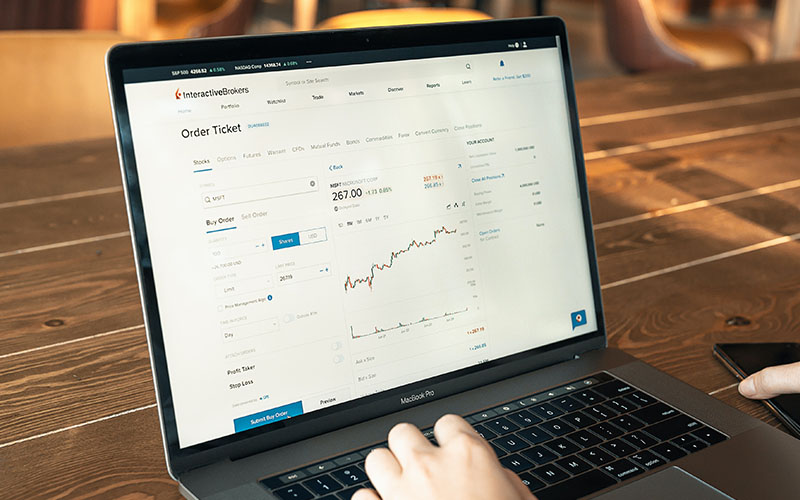401(K) Loans: A Complete Guide For Employers About This Plan Feature
For many employees, knowing they can tap into their retirement savings in the event of an emergency by taking 401(k) loans can give them peace of mind – and boost their 401(k) participation. But if you’re thinking about this feature, there are a lot of factors to consider in deciding if it’s right for your organization. We’ll explain everything you need to know to make a decision.
In this article, we’ll discuss what a 401(k) loan is, how it works, the benefits of offering this feature, repayment rules, and guidance when an employee changes jobs. After reading this, you’ll be able to decide if a 401(k) loan feature is right for your business and your employees.
What is a 401(k) loan?
A 401(k) loan is a retirement plan feature that allows employees to borrow from their retirement account balance for a short-term purpose like an emergency. Unlike a traditional loan, a plan participant doesn’t have to undergo any type of credit check or deal with a lender; they just have to qualify under the rules of your plan, which we’ll discuss in a bit.
Are there different types of 401(k) loans?
Generally speaking, there are 2 types of 401(k) loans: a general purpose loan and a residential loan.
- 401(k) General Purpose Loan: This type of loan can be used for any reason when an employee needs cash such as when buying a car or paying for college. When applying for the loan, the employee doesn’t need to explain why they need the money or what they plan to do with it. The maximum repayment term for a general purpose loan is 5 years.
- 401(k) Residential Loan: An employee who needs to take a loan to access money to buy a primary residence is called a residential loan. For this type of loan, an employee must provide supporting documentation, like a purchase and sales agreement. These loans offer longer repayment terms than a general purpose loan. We’ll talk about repayment later.
For either type, the IRS sets a maximum amount that an employee can borrow. That amount is 50% of the employee’s vested balance in the plan or $50,000 minus the highest outstanding loan balance an employee had previously – whichever is less. Let’s look at a couple of examples:
- An employee has $10,000 vested: They could borrow $5,000.
- An employee’s balance is $200,000 vested: If they’ve never taken a loan, the maximum they could borrow would be $50,000; however, if they took out a loan 9 months ago for $20,000, the most they could borrow now would be $30,000.
How does a 401(k) loan work?
When you incorporate a 401(k) loan feature into your retirement plan, you’ll spell out how the borrowing works. For example, you’ll describe the:
- Minimum or maximum amount an employee can borrow
- Loan term
- Need for spousal approval, if required
- Interest rate and fees
- Ability of employees to direct where the loan money comes out of
After reviewing your policies, if an employee decides they want to take out a 401(k) loan, they’ll apply. You’ll have the ability to deny their loan but just be sure that any limits to who can take a loan apply to all plan participants. For example, you may only allow 401(k) loans for hardship situations or you may only allow one outstanding loan at a time.
If awarded, with a 401(k) loan feature, you must provide the following reporting for compliance purposes: promissory note (terms of the loan including amount, interest rate, total interest, first loan repayment date, length of the loan, loan repayment frequency, and term agreement), amortization schedule, loan monitoring report, and delinquent loan report.
How do employees repay their 401(k) loans?
If a loan is approved, the employee will either receive the money directly in their bank account or by check. To repay the amount of a general purpose loan, they will be able to request a repayment term between 1 year to a maximum repayment term of 5 years. For a residential loan, the maximum repayment period is 30 years, although an employer may elect a shorter term. Loan repayments – which must be made at least quarterly – are done via payroll deduction based on your payroll frequency and are reinvested according to the employee’s current fund elections.
If an employee falls behind on their repayments, and no payment is made in the quarter following the last quarter a payment was received, they will be deemed in default of the loan. If that happens, the outstanding loan balance will be considered a taxable distribution and must be reported as taxable income when the employee files their taxes. It’s your responsibility to inform the employee of these consequences.
It’s important to note that an employee who goes out on a leave of absence may defer 401(k) loan repayments for up to 1 year without the loan going into a default status. Once the employee returns, you’ll need to make sure they bring the outstanding loan balance current by (1) making up the missed payments or (2) re-amortizing the loan for the missed payments. If they opt for the latter, your third-party administrator (TPA) will calculate the new loan payment amount and revise the amortization schedule, which you’ll need to provide to the employee.
If, however, the employee leaves your company permanently, the outstanding loan balance becomes due. Unless the employee repays the loan, the outstanding balance will be considered taxable income the earlier of (1) an employee taking distribution of their entire retirement account or (2) the quarter after the quarter the last payment was received. Again, the employee will be responsible for all tax consequences and penalties (if under the age of 59 ½).
Why should I offer this feature?
The primary reason you’d want to offer a 401(k) loan feature is to drive plan participation. That’s because some employees may not want to enroll in a plan and set aside money if they think they can’t easily access it in case of an emergency or life-changing event. By allowing loans, employees know they’ll be able to use the funds if they need to.
When they do take a retirement loan, it’s a non-taxable event. That means an employee doesn’t claim a 401(k) loan when they file their taxes. And since the principal and interest on a 401(k) loan goes back into the employee’s retirement account, they’re really paying themselves back.
If you decide to offer a loan feature, however, you’ll want to make sure you educate employees about the use of it. For instance, you’ll want to explain that loans should only be used when necessary since they can impact an employee’s retirement savings goals because they’ll lose the compounding of the loan distribution. And you should share how, when they take a loan, it’s subject to double taxation since employees have to make the repayments with after-tax dollars and then be taxed on the retirement distribution.
Boosting Employee Financial Wellness With The Right Benefit Offerings
As more workers worry about making ends meet, they’re looking to employers for assistance. 401(k) loans can be a great start or addition to your company’s financial wellness program to help support employees when they need it most. However, managing the plan feature may be administratively overwhelming. To make things easier on yourself and your team, you may decide to work with a third-party administrator to help.
As you research options, you may be wondering whether Complete Payroll Solutions (CPS) could be a good fit for your company. Learn more about CPS’ TPA services to see how we can assist your company with a flexible plan design that meets the needs of your and your employees.
in
 Benefits
,
401(K)
,
Retirement
Benefits
,
401(K)
,
Retirement




.jpg?width=800&height=500&name=Starting%20A%20401(k).jpg)

